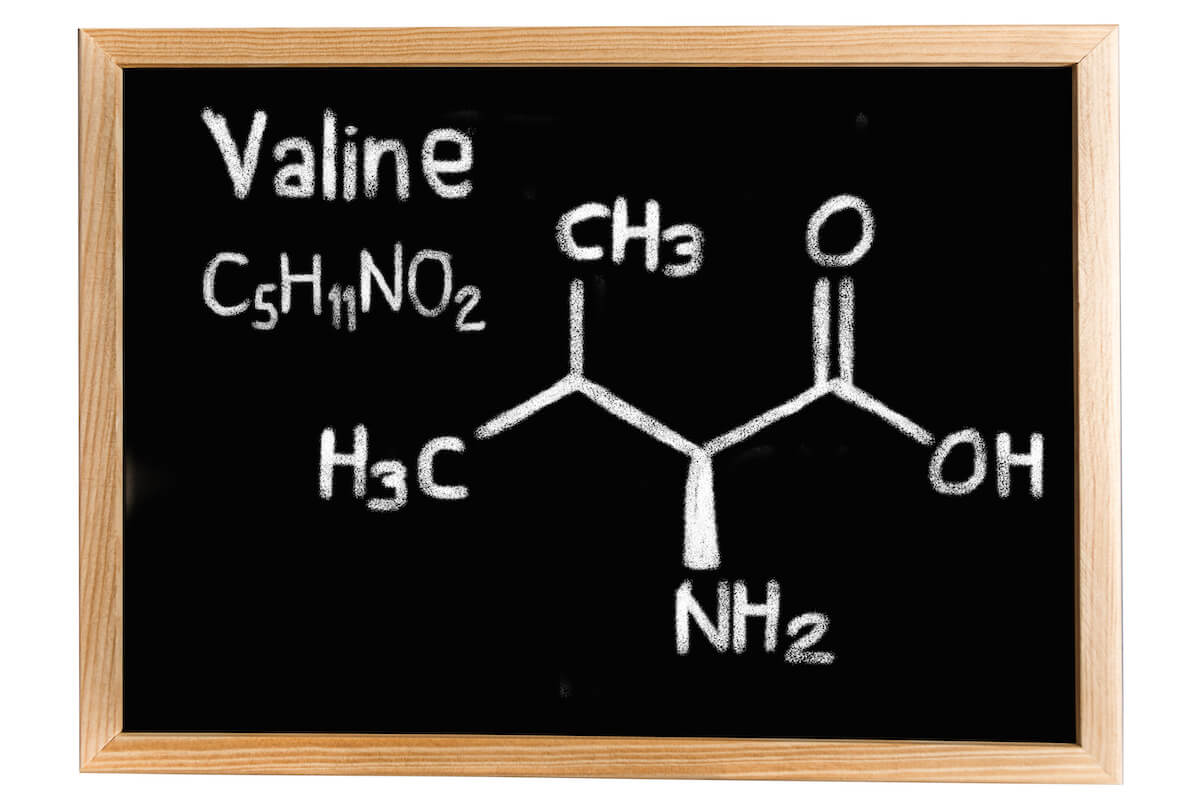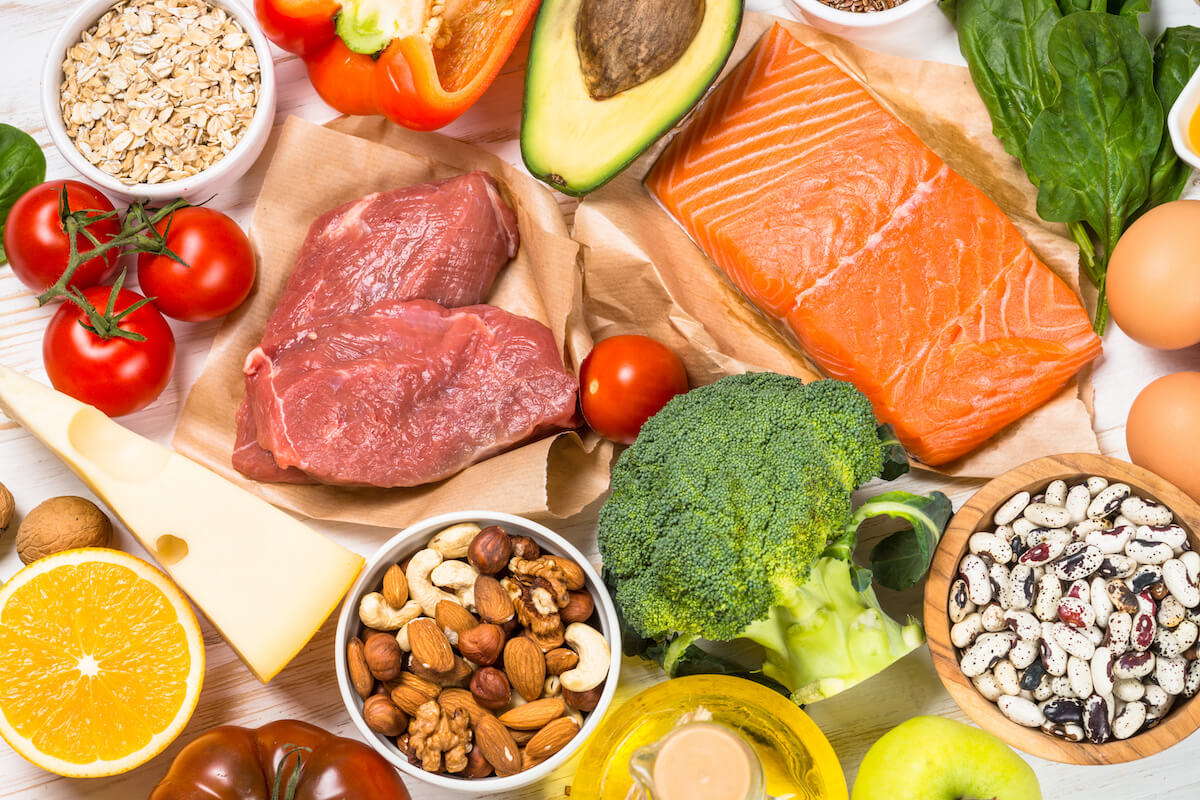
29 Jun Essential vs. Non-Essential Amino Acids: Understanding the Difference
No matter how active or inactive you are, your body needs amino acids to function correctly. And if you’re an athlete or bodybuilder, or an older adult looking to maintain muscle mass, you’ll need even more amino acids than the average, moderately active person.
You may be wondering what type of amino acids you need and if there’s even a difference between essential vs. non-essential amino acids.
Let’s clarify exactly what amino acids are and why you need them. We’ll also discuss essential vs. non-essential amino acids and how you can boost your intake to optimize your health.
What Are Amino Acids?
Amino acids are organic compounds made up of nitrogen, hydrogen, oxygen, and carbon.
Their biochemistry varies, but one of their most critical functions is to act as the building blocks of protein. Protein has many important roles to play in your body, including building and maintaining your bones, organs, and muscle tissue. It also helps to produce hormones, enzymes, and hemoglobins. It also strengthens your immune system.
For all these things to happen, you need enough essential vs. non-essential amino acids. But what’s the difference?
Essential vs. Non-Essential Amino Acids
There are hundreds of different amino acids, but only 20 are really important for the human body. These have a variety of functions depending on whether they’re essential, non-essential, or conditional.
Non-Essential Amino Acids
Provided you’re in relatively good health and eating enough protein and carbohydrates, your body can make non-essential amino acids — also known as dispensable amino acids — by combining other amino acids. One way this can happen is by transamination, where an amino group from one molecule is added to an alpha ketoacid.
The non-essential amino acids are:
- Alanine
- Arginine
- Asparagine
- Aspartate (or Aspartic Acid)
- Cysteine
- Glutamate (or Glutamic acid)
- Glycine
- Proline
- Serine
- Tyrosine
Just because they’re called “non-essential” doesn’t mean you don’t need them — it just means they’re not essential in your diet. In fact, you need non-essential amino acids for many different functions. They’re involved in supporting tissue growth, strengthening the immune system, keeping your blood and hormones healthy, and providing energy.
Essential Amino Acids
The essential amino acids — or indispensable amino acids — can’t be made by the human body, but your body needs them for growth and proper functioning. So, you need to get them from the nutrients you consume as part of your diet, specifically protein.
That’s the big difference between essential vs. non-essential amino acids: essential amino acids aren’t produced by the body, while non-essential amino acids can be.
The nine essential amino acids are:
- Isoleucine
- Leucine
- Valine
- Histidine
- Lysine
- Methionine
- Phenylalanine
- Threonine
- Tryptophan
When you eat protein, the digestion process breaks it down into amino acids. These amino acids are then recombined through a process known as protein synthesis to build the protein your body needs. Essential amino acids are also used to synthesize other amino acids or to carry out a variety of functions in the body.
For example, phenylalanine is a precursor for dopamine and tyrosine (one of the non-essential amino acids). These are neurotransmitters that help to carry chemical signals around the body. Tryptophan, on the other hand, is needed to make serotonin, which helps to regulate mood, digestion, and sleep, while histidine is involved in sexual functions and protects against radiation and heavy metal damage.
Branched-Chain Amino Acids

There is also a subcategory of essential amino acids. These are known as branched-chain amino acids (BCAAs) because of the branched side chain in their molecular structure.
The BCAAs are:
- Leucine
- Isoleucine
- Valine
These have many important functions, but the ones we’re most interested in here are their muscle-building capabilities. Muscle is clearly a priority when you’re training for bodybuilding or athletic events or if you’re simply trying to maintain your muscle mass as you get older.
Leucine is especially important as it triggers muscle protein synthesis. Isoleucine is critical for muscle metabolism, while valine helps to provide energy and stimulates muscle growth and repair.
Conditional Amino Acids
Finally, there are the conditional amino acids, which are:
- Arginine
- Cysteine
- Glutamine
- Tyrosine
- Glycine
- Ornithine
- Proline
- Serine
Your body can make these most of the time — except under specific circumstances, such as being ill, very stressed, or not eating enough. Also, young children can’t synthesize certain amino acids like tyrosine, while adults can, and pregnant people can’t synthesize arginine.
In these cases, it’s a good idea to focus on consuming more of that specific conditional amino acid to make sure you get adequate amounts.
Sources of Essential Amino Acids

We’ve established that you need to get plenty of the essential vs. non-essential amino acids (and occasionally, the conditional amino acids) from food sources. But where exactly do you get them from?
The best sources of amino acids are complete proteins, which contain all the essential amino acids your body needs.
If you eat animal products, animal proteins are excellent sources:
- Beef
- Lamb
- Pork
- Fish
- Poultry, like chicken and turkey
- Eggs
- Dairy products, such as yogurt, cheese, and whey
If your diet is plant-based, there are a few plant proteins that are complete. These include:
- Soybeans and other soy products, like tempeh or tofu
- Quinoa
- Chia seeds
- Amaranth
- Hemp seeds
- Buckwheat
- Dark leafy greens, like spinach and kale
There are also many plant proteins that are incomplete, which means they contain some of the essential amino acids but not all. For example:
- Beans, lentils, and chickpeas
- Nuts and seeds
- Grains
- Vegetables
Combining some of these over the course of the day gives you the full essential amino acid profile you need. When you combine them, they are known as complementary proteins. Try these combos:
- Peanut butter on whole-grain bread
- Salad plus beans and seeds
- Hummus with pita bread
- Beans with brown rice
- Tofu with barley or quinoa
- Granola or nuts with yogurt
You can make many delicious meals with complementary proteins. Keep in mind that plant proteins don’t contain the same levels of essential amino acids as animal products, so you need to make sure you eat enough of them.
Also, note that you can’t live on protein alone, no matter how many essential vs. non-essential amino acids they may contain. To operate at its best, your body needs all the macronutrients — protein, carbohydrates, and healthy fats — along with plenty of fresh fruit and vegetables.
Supplementing With Amino Acids

Your body needs a lot of essential amino acids, especially if your goal is to build and maintain muscle.
To get enough amino acids, the average person needs about 0.8 grams of protein per kilogram of body weight per day. If you’re an older person counteracting sarcopenia — or loss of muscle mass — you need 1.5 grams per kilogram, and if you’re an athlete or bodybuilder, you probably need at least 2 grams per kilogram every day.
Eating enough to fulfill all your amino acid requirements may be a challenge, which is why many people use dietary supplements.
Remember that you’re looking for supplements that provide you with essential vs. non-essential amino acids.
You can get essential amino acids from many kinds of supplement sources, including whey, pea, brown rice, or hemp protein supplements. You can also buy pure amino acid supplements or even BCAA supplements if you want to get really specific.
If you invest in a protein supplement, make sure you get one that’s of excellent quality. Look for high bioavailability so your body can use most of the essential amino acids in the supplement.
Ingredient Optimized protein supplements have been independently proven to be more bioavailable than non-optimized supplements and better at promoting increased muscle mass and strength, as well as recovery. Ingredient Optimized products include ioWhey, ioPea, and ioCollagen, with ioBCAA and ioLeucine available soon.
Look out for our partner products online and in stores now, including:
- Kaged Muscle Plantein and Clean Meal
- Performix ioWhey Protein
- Myprotein’s The ioPea
- Glaxon Wonder Collagen Protein
Getting Enough Essential vs. Non-Essential Amino Acids Is Critical for Your Health
Amino acids are the building blocks of protein in your body — and protein has many important functions, including building all your tissues and helping with other essential processes. If you’re an athlete or bodybuilder, protein is especially critical for building and maintaining muscle.
There’s a difference between essential vs. non-essential amino acids, though. Essential amino acids need to come from food sources, while your body can make non-essential amino acids.
Make sure you get enough essential amino acids from complete or complementary proteins. If you can’t get your daily dose from food alone, top up with high-quality protein supplements to keep your body in tip-top shape.


